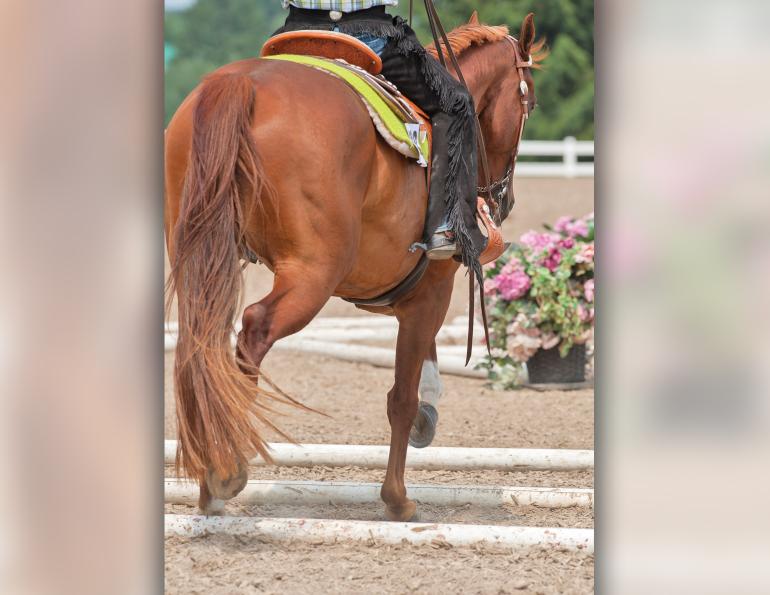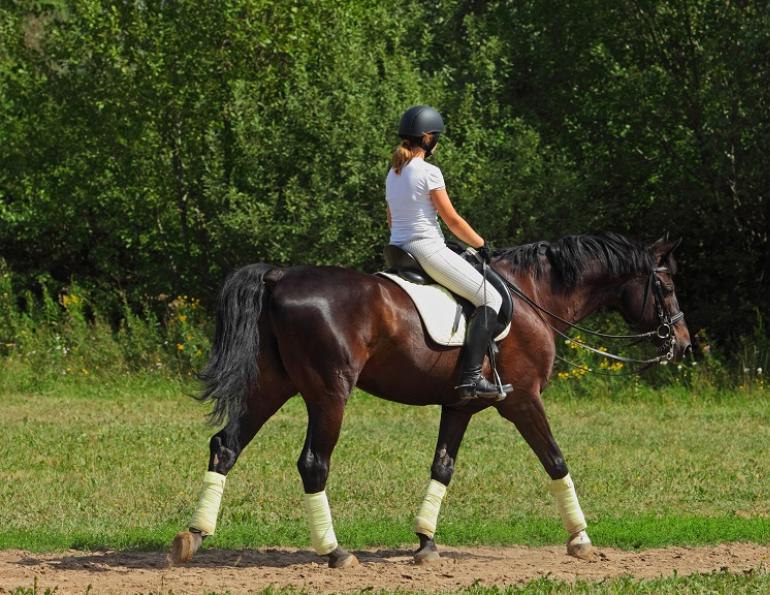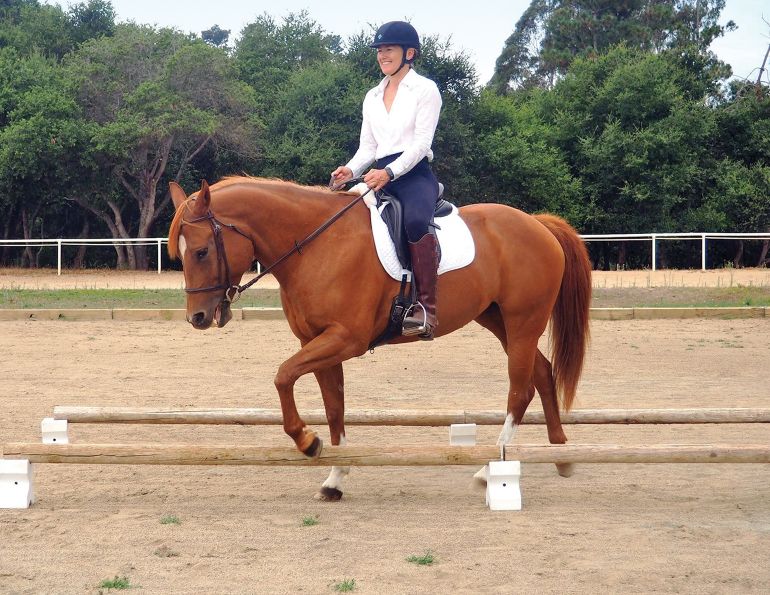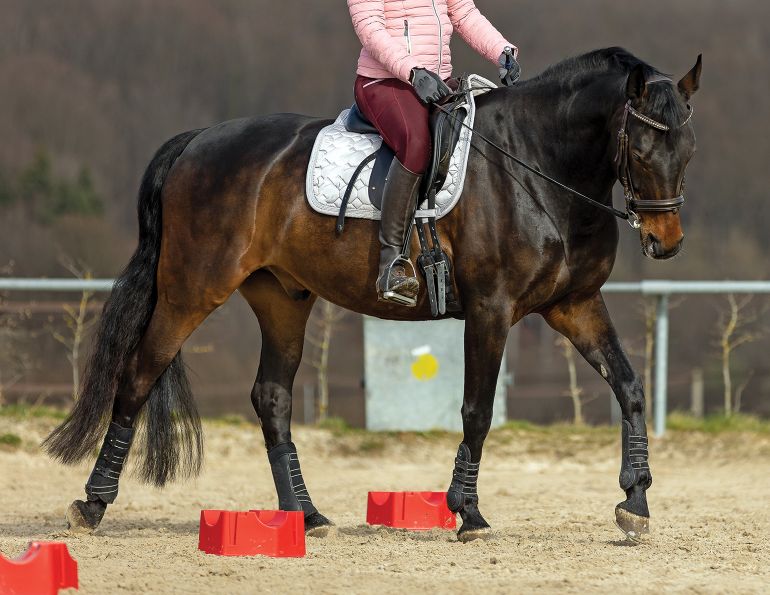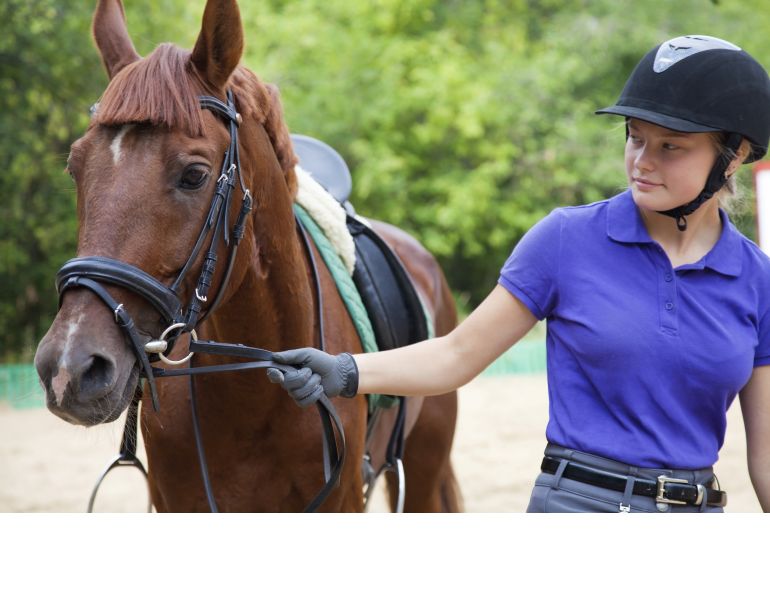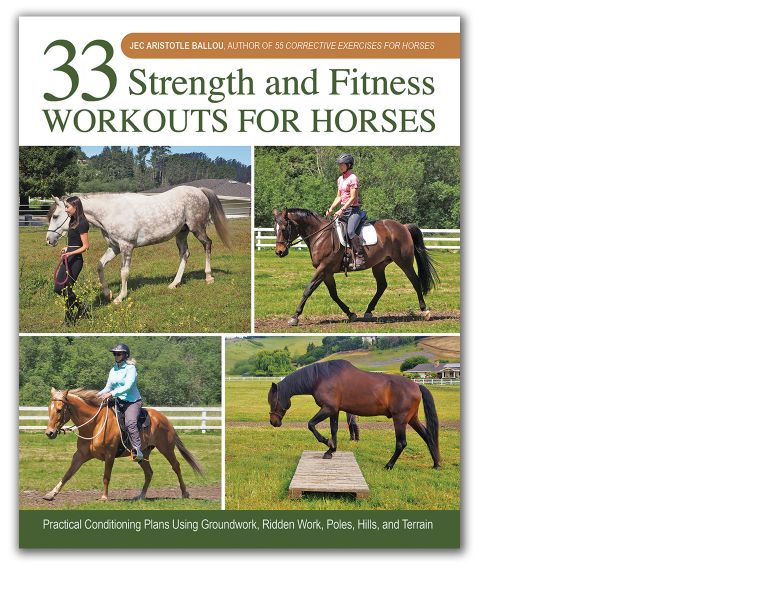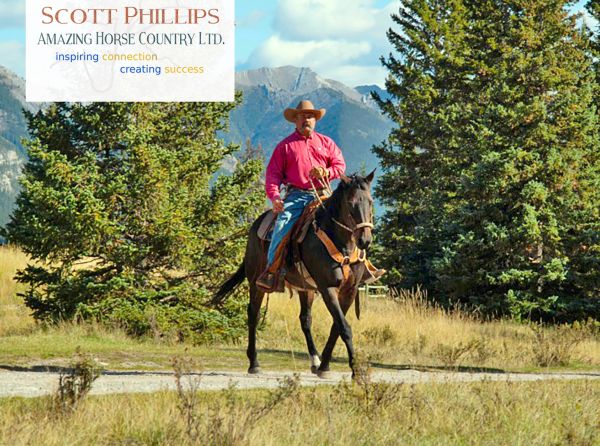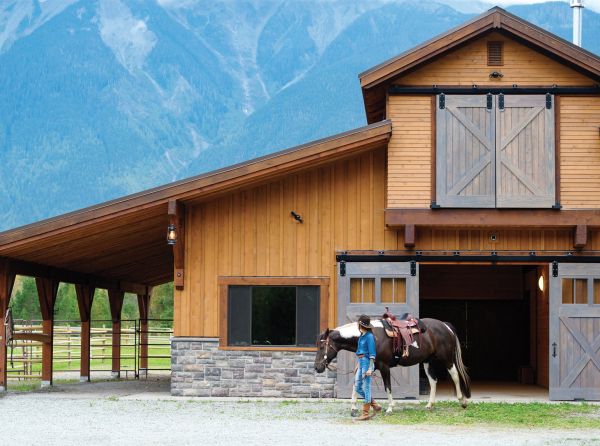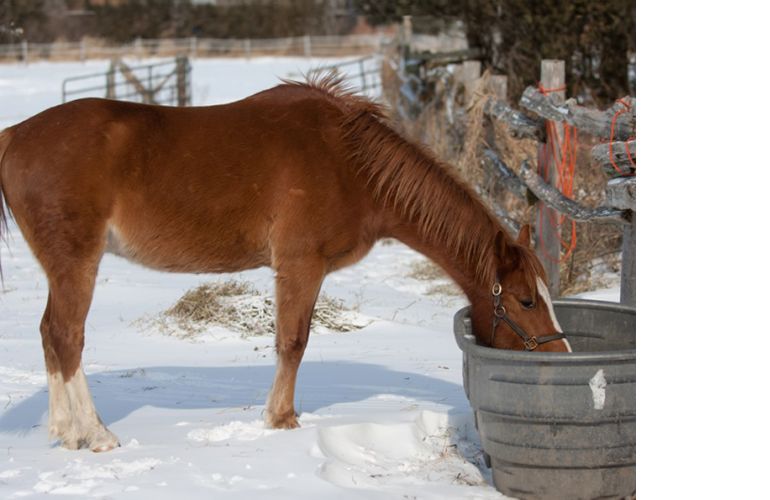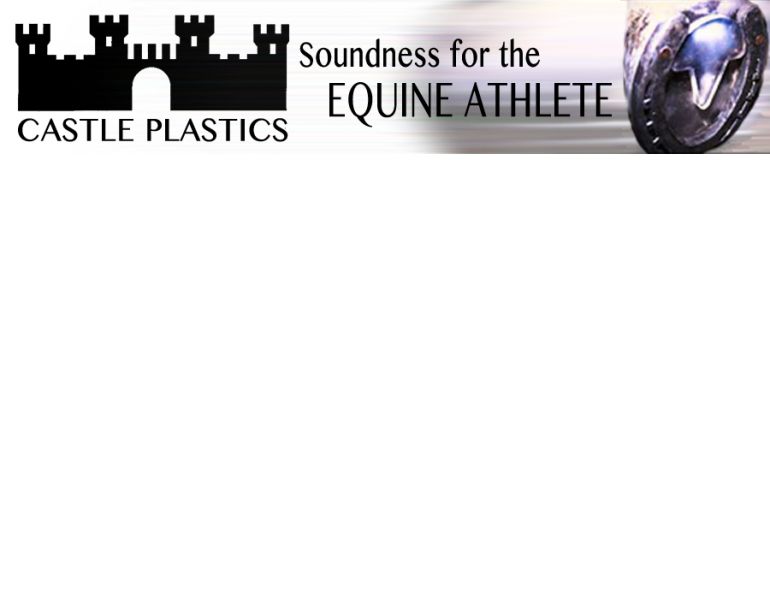By Lindsay Grice, Equestrian Canada coach and judge
Ground rails, trail pattern poles, or obstacle course logs — these low-lying obstacles are a regular feature in the equestrian experience. We walk, trot, and canter over them in straight paths, serpentines, or pinwheels.
There are more commonalities than differences in pole crossing styles between riding disciplines. I’ll cover the shared essential ingredients for English and Western riders in this article. But first, let’s start with some differences worth noting.
Western riders cross poles set at shorter distances and in quieter striding, working toward patterns of poles in tighter formations. Competitors in trail, ranch trail, ranch riding, and Western riding classes navigate poles at the jog and lope. Precision is prized. There are assigned penalties for hitting poles, even for a slight tick in trail classes. Adding or subtracting a stride between the rails earns penalties, too. In walk-overs, two hooves in the same space or no hooves (skipping) a space costs a one-point deduction. Moreover, style and consistency are scored. The horse should cross each pole without a change in cadence or topline or even changing his pleasant expression.
Related: 9 Best Cavalletti Exercises
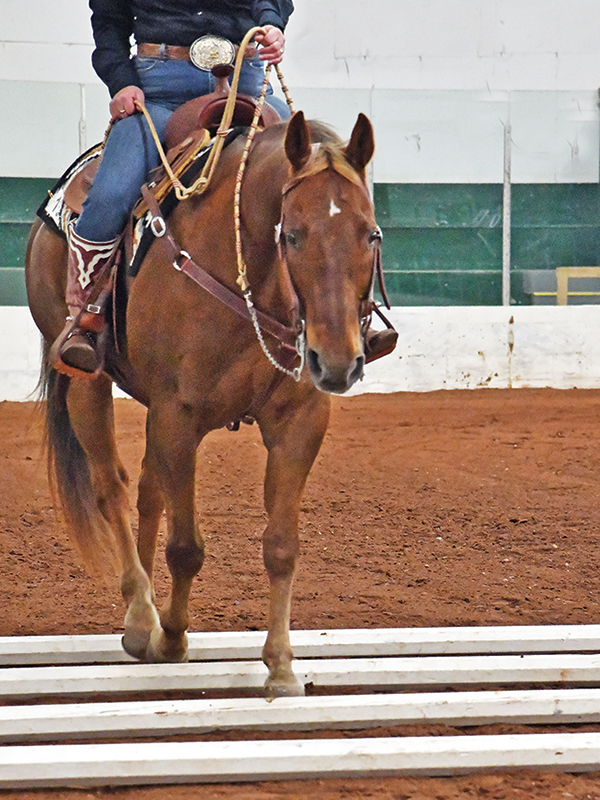
Western riders cross poles set at shorter distances, and with quieter striding. Photo: Pam Mackenzie Photography
English riders use ground rails as a training tool rather than an element in competition. Riding over poles on the ground is an excellent way to work on stride adjustability for the horse and for the rider. Poles can encourage buoyancy in the stride, teaching your horse by trial and error to rebalance and “define” his step. Ground rails can prepare horse and rider to answer the questions asked in jumper and equitation courses without actually jumping.
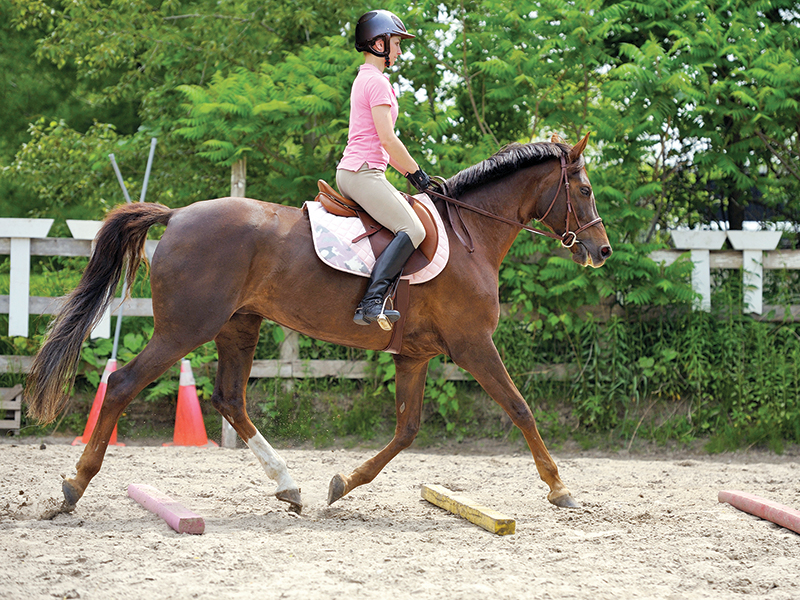
English riders use ground poles to work on adjustability and encourage buoyancy in the stride. Photo: Clix Photography
Regardless of your riding style, the principles and the ingredients are the same in order to take poles in stride.
Related: What is Contact? And Do Riders Really Need It?
POLE CROSSING PRINCIPLES
Two Big Ideas
1. Master fundamentals before including poles. Don’t skip training steps. Nothing shakes a horse’s confidence like getting his feet tangled as he leaps over and lands on the rails. And no wonder — for a prey animal to have trapped feet is big trouble.
A good math teacher communicates the basic concepts, rehearsing adding and subtracting before teaching equations and problem-solving. As a rider, it’s your responsibility not to pose questions with poles your horse isn’t ready to answer.
Trotting over a row of multiple poles is overwhelming to a horse that hasn’t mastered crossing two poles. Misjudge the spacing on the first two poles and by mid-row, his legs are scrambling like Fred Flintstone’s feet as he rushes to the end of the line.
Loping over a pinwheel of four poles starts with consistently rating the stride between two poles and then three on a shallow curve, before tackling the tighter turns between pinwheel spokes. Misjudge the distance to the first pole and it’s tricky to recover your rhythm and carry on without a big move. And big moves scare green horses.
Building your horse’s skill and confidence over poles begins with laying a solid foundation. As with jumping, the three building blocks of successful rail crossing are stride adjustment, straightness, and suppleness.
Jumping is fun. Competitive trail is fun. Fundamentals and flat work… less so. Perhaps being a fan of fundamentals makes me a “less fun” coach at times, but having to exit the show ring because your horse got flustered over a trail course of poles for which he wasn’t prepared is not fun for you and not fair to your horse.
2. Slower is faster. A logical progression requires a slower pace. Slow down a horse’s legs to slow down his thinking. Trot the rails first, before loping or cantering. This is especially important for novice riders still developing their balance and their “eye.” Rider error can incite horses to hurry through ground rails and trail obstacles.
As a younger rider, I didn’t question the notion that rushing is eagerness. In fact, rushing is a horse’s automatic response triggered by fear. With every mistake confidence erodes, and a horse’s flight instinct takes over. Horses that have learned to distrust the judgement of their riders just want to get it over with! Rushing will rattle a rider’s confidence, too.
To summarize the two big ideas: You know you’re ready to progress by adding poles, pace, or more complex configurations when your horse is crossing one or two rails without changing rhythm or composure. Slow and steady is the best insurance policy.
Related: Horsemanship - Are You Riding All Your Gears?
THREE-POINT CHECKLIST
Use this three-point checklist on the approach to every obstacle: Basically, as long as you get your horse to the pole straight, in the right length and quality of stride, and focused on his job, the rest is your horse’s responsibility. Do you have the tools available to set the approach and make any needed adjustments on that approach?
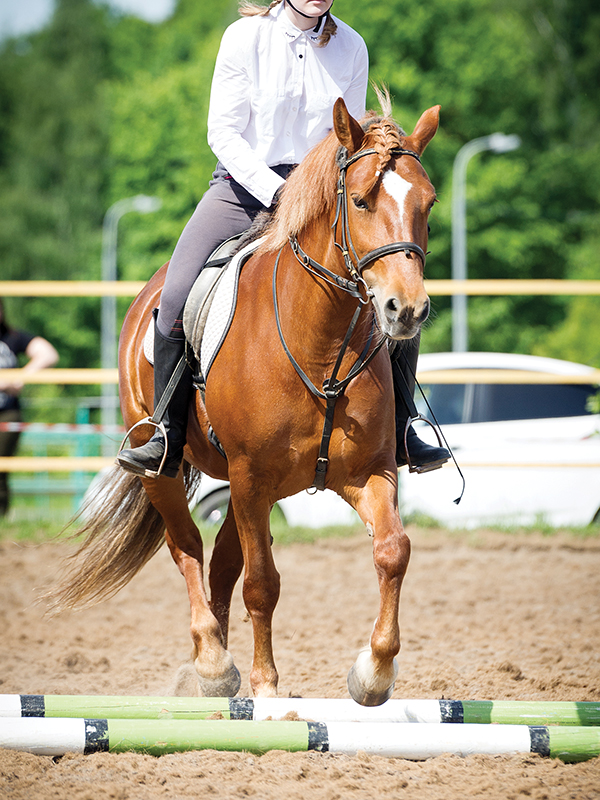
The horse should approach the pole with his focus attentive, his body aligned straight, and in the right length and quality of stride. Photo: Shutterstock/Olgaru79
1. Straightness. Is your horse laterally responsive, guiding easily from your leg and a subtle direct or neck rein? To cross the pole cleanly, your horse’s spine should be aligned straight from nose to tail, with front and back feet straddling the line of travel. So, curved path or straight, no train car should drift off the track. Having the ability to control the head, shoulders, and haunches so they individually follow the line of the track is the essence of straightness. As a judge, I wince to see a competitor who hasn’t trained their horse past the “head steering” stage before entering a show. Without confirmed lateral skills they’re unable to override the equine inclination to drift out of the trail obstacle or to funnel a wiggly horse forward and over the fence. Leg yields, and turns on the forehand and haunches, are the basic ingredients needed to approach a pole straight, steer straight, or curve to the next one. (Figure 1)
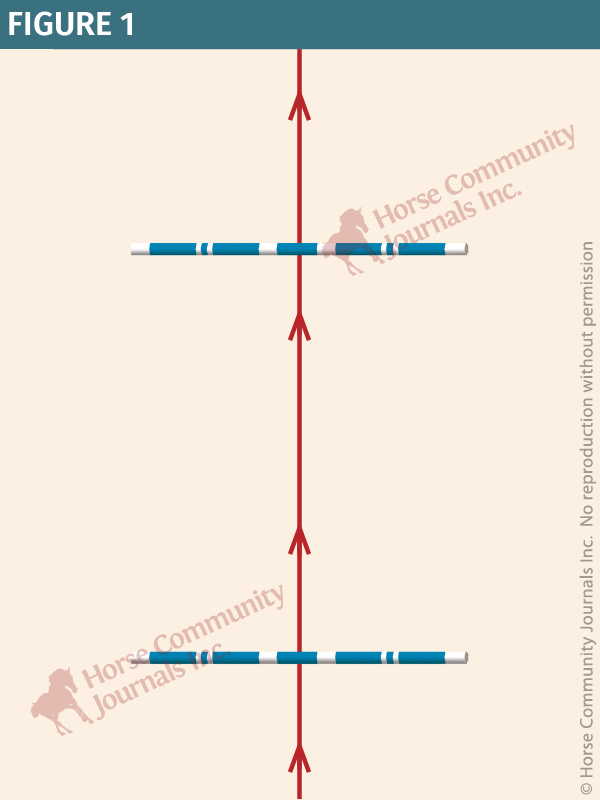
2. Stride adjustment. You should be able to adjust your horse’s trot or lope as evenly and smoothly as an elastic band. Trail courses are built on an average three-foot trot and six-foot lope stride. Jumping courses are set on an average twelve-foot stride. Extend and collect the trot between posting and sitting. Stretch and shrink your lope between six, ten, and twelve feet. Train yourself to feel what your horse’s six-foot stride feels like and keep it the same, stride after stride. Maintain your rhythm like a metronome. When riding, I have a steady drum beat in my head, with the goal to match every stride to the beat.
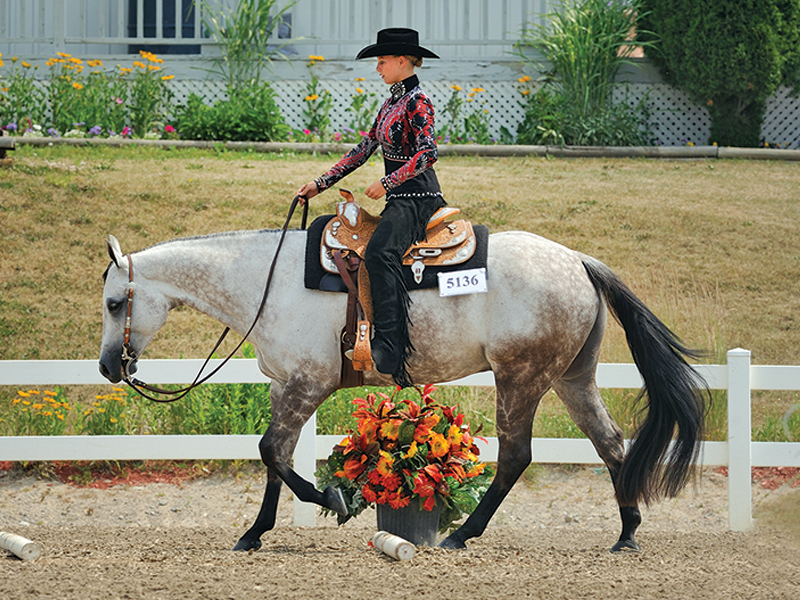
A Western rider lopes over poles in a Trail class. Photo: Clix Photography
To modify the stride, you’ll need some skills. Does your horse have a reliable “go” button? Your resisting hand regulates the energy you create with your leg. Is there any resistance when you hold to slow down? Does your horse get excited or quick when you lengthen, or fall out of gait when you shorten? Polish your stride adjustment without the rails until it becomes elastic.
Related: Lunging Horses - Why Bother?
3. Suppleness. The quality and outline of the stride is the final ingredient. Elasticity and responsiveness, laterally and front-to-back, equal a supple horse. With suspension or “bounce to the ounce” in the gait, the horse has enough energy to adjust, making even an awkward approach or take-off spot work out. With your horse’s frame extendable and his head-level adjustable, your arms can allow him to stretch and look down at the pole in the dirt. A horse’s line of binocular vision is along the plane of his face. If his head is in the air, he’s going to hit the rails.
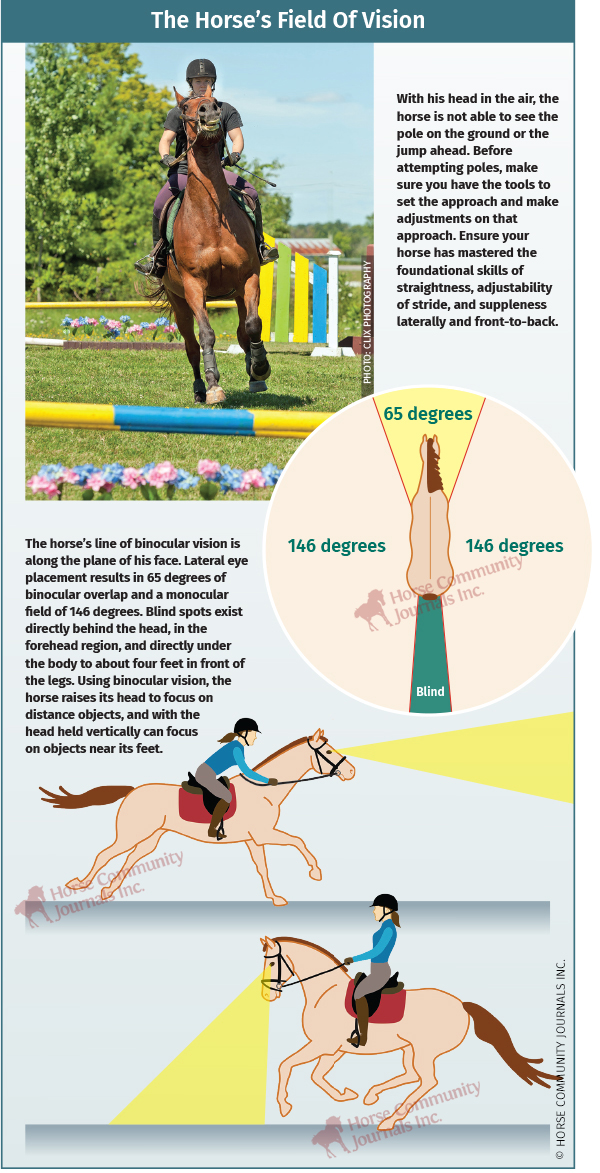
Does your horse melt into your hand when you take contact of his mouth? If he ignores or braces against your hand you’ve lost your telephone connection. It’s tough to pilot an inattentive horse.
MORE POLE CROSSING POINTERS
• Develop your eye. To cross poles cleanly, your eye, trained to locate the take-off spot, is your greatest tool. For example, when loping rhythmically to an obstacle, you’ll sense whether you need to shorten or lengthen the stride a shade in order to meet the obstacle smoothly.
Your eye also needs to evaluate the measurements between poles arranged at assorted angles to plan your crossing points. Walkover logs may be set in a zigzag or curve. Can you spot and pick your way through the two-foot gaps? A fan or pinwheel is wider toward the outer limit. With a horse responsive to your lateral aids, you can place each hoof on the perfect path to trot, lope, or canter through the obstacle to best suit his particular stride.
I encourage riders to be decisive with their eyes, identifying the crossing points on the rails and on the line of travel, without wavering. Where you look you will go! When I get “soft” with my eyes, I start to make mistakes.
Related: Introducing Your Horse to Lateral Work
• Count strides. Start with cantering single poles, scattered around your arena, at distances far enough away from each other that you have time to think in between. Approach each pole on a perpendicular path, at the stride length you determine, with your horse’s body aligned straight and his focus attentive.
See if you can count three strides before each pole. If you miscalculate, ask yourself if you should have lengthened or shortened the stride, and file that information into your mental computer for the next ground rail. After loping dozens of poles, your brain will start to make automatic decisions, just like it learned to do when driving a car. (Figure 2)
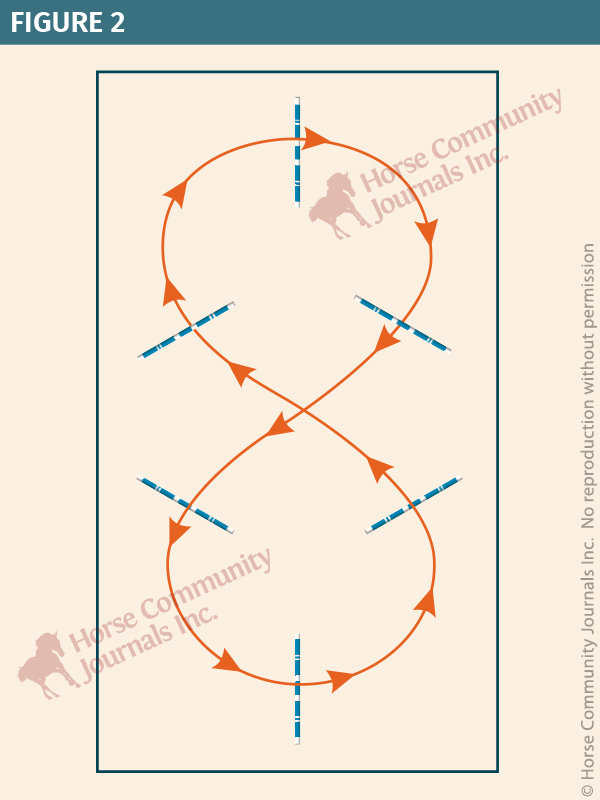
• Hands off zone. Spotting the take-off distance several strides away enables you to make small adjustments to each stride preceding the ground rail, avoiding the last minute, hair-raising, chip-in or “big lurch.” Generally, leave your horse alone and allow him to balance within at least two strides before the pole.
Related: The Case for Lightness with Horses
• Put it together. When your eye is correctly finding the striding to single poles, add more! When coaching English riders, I’ll vary the distance between related ground rails, having them add and subtract, stretch and collect their strides. They’re learning to handily execute the tasks between the jumps — bending lines and rollback turns.
Western riders graduate to trotting and loping multiple poles in a row, through boxes and geometric shapes limited only by one’s imagination. I like to set up a grid for my students, combining ground rails in squares, rectangles, and chutes in three-, six-, and twelve-foot spacings. These grids can be approached from any direction, lengthwise and crossways. Build your grid out gradually, adding one pole at a time so as not to overwhelm your horse.
• Measure carefully. Use a measuring tape and ensure the distance is doable for your horse. For example, walking over poles spaced for jogging will only encourage your horse to hit rails and be careless. Crossing obstacles measured inaccurately is facing your horse with an unfair question, rattling his confidence.
Use poles that go clunk when you hit them. Lightweight and PVC poles do not instil carefulness in horses.
As a schooling exercise or element of competition, many riders find crossing ground rails more fun than flat work and less risky than jumping. Build your foundation systematically and before long, you’ll be taking poles in stride.
Related: Building Stronger Horses
Related: Equitation Essentials - The Hows and Whys of a Winning Riding Position
Main Photo: Clix Photography



